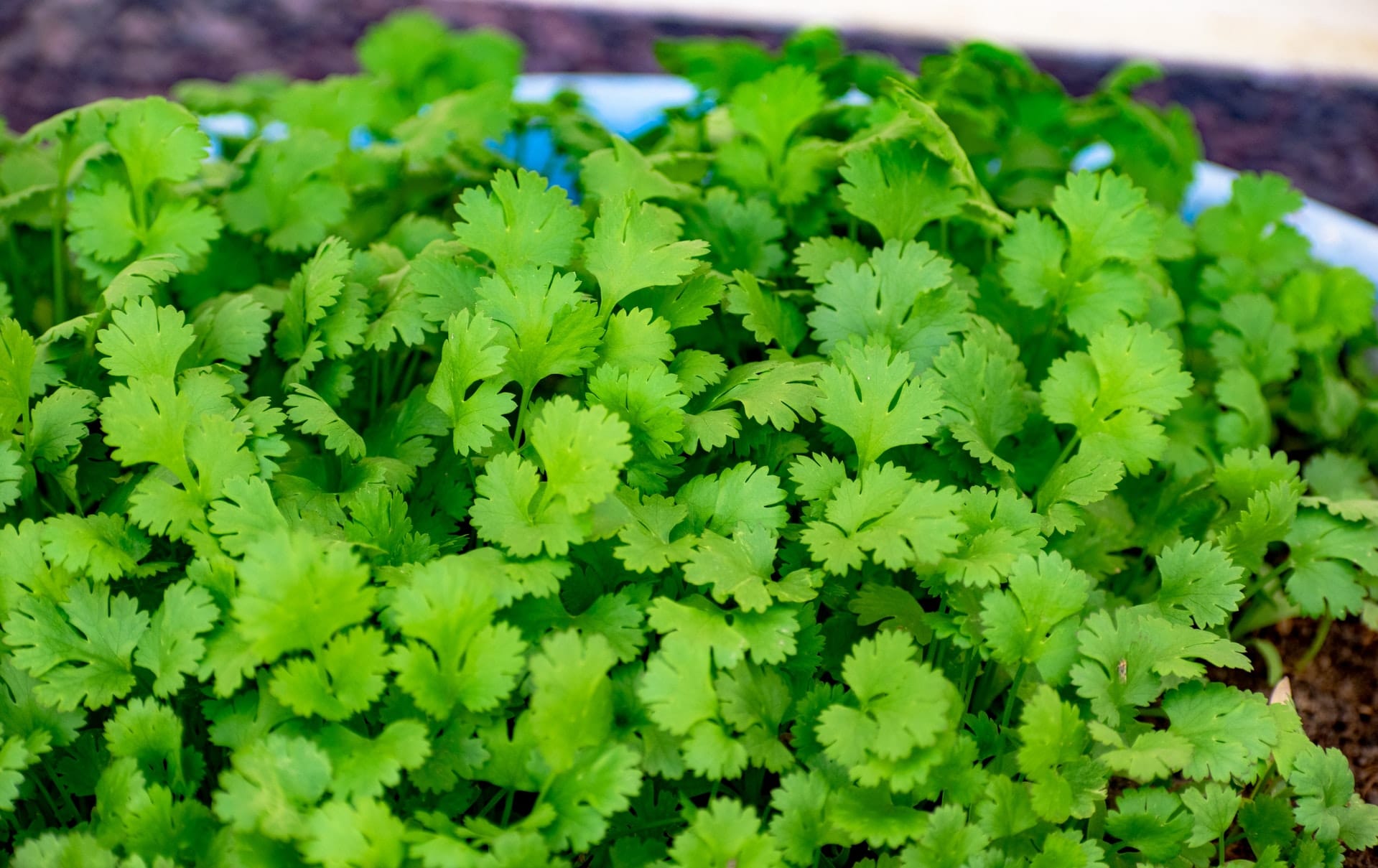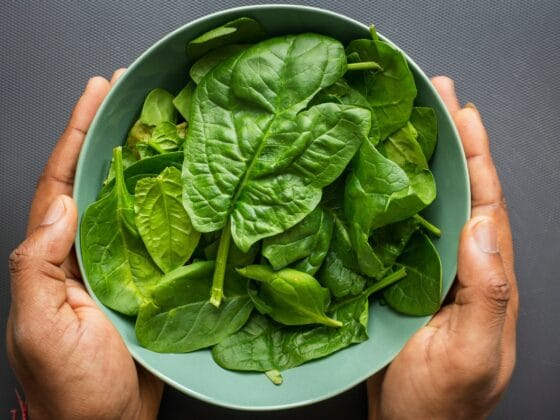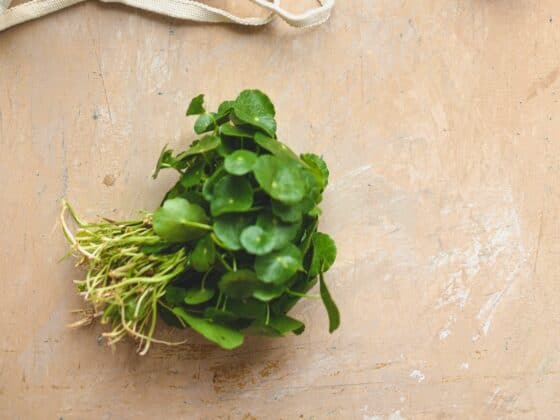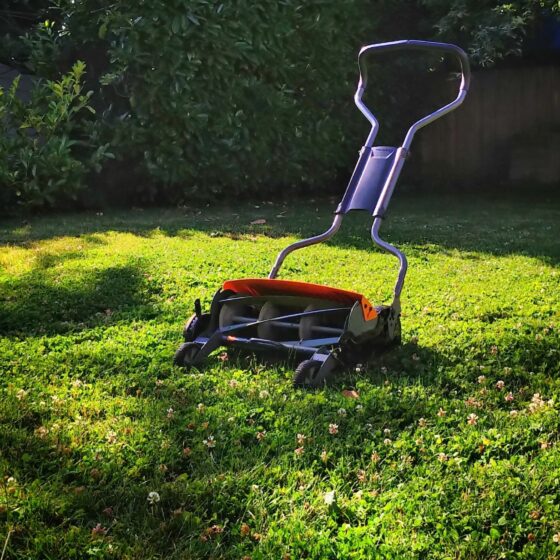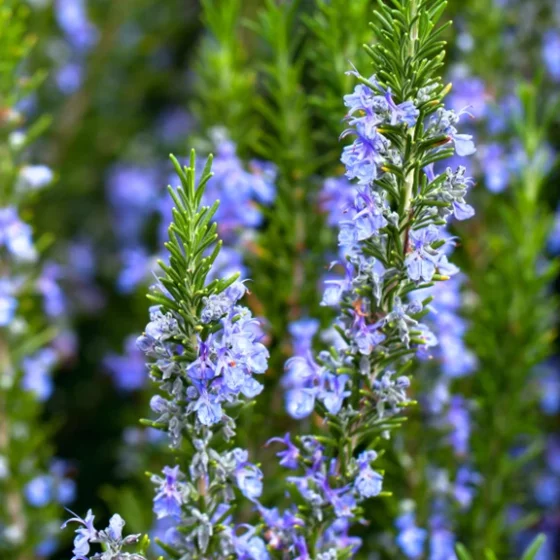If you’re looking for an easy way to propagate cilantro, look no further! This step-by-step guide will show you how to grow cilantro from cuttings in just a few simple steps.
Cilantro (coriander) is a delicious herb that can be used in many dishes. It’s also very easy to grow, and can be propagated using cuttings from the parent plant. So if you’re looking for a way to increase your cilantro supply, follow these simple instructions and start growing your own today!
Growing Cilantro from Cuttings
To get started, you’ll need a few supplies:
- A pot or container with drainage holes
- Potting soil
- A cilantro plant
- A sharp knife or pair of scissors
- Water
First, fill your pot or container with potting soil and moisten it with water. Then, take a cutting from your cilantro plant, making sure to cut below a leaf node (the point on the stem where leaves branch off). The cutting should be about four inches long.
Strip away the lower leaves from the cutting, then dip the end of the cutting into some rooting hormone.
Next, insert the cutting into the potting soil, at a depth of about two inches. Be sure to keep the leaf nodes above the soil surface. Water the cutting well, and place the pot in a sunny location.
Within a few weeks, you should see new growth emerging from the leaf nodes. Once the plant has established itself, you can begin harvesting cilantro leaves for use in your favorite recipes! Enjoy!
Growing Cilantro from Cuttings in Water
First, take a look at your cilantro plant and identify a healthy stem that has plenty of leaves. Using a sharp knife, make a clean cut just below a leaf node. Cut at an angle so that more surface area is exposed for rooting.
Next, remove the lower leaves from the cutting, leaving only a few leaves at the top. This will help prevent the plant from losing too much water while it’s trying to root.
Now, it’s time to place your cutting in water. Find a clean glass or jar and fill it with fresh water. Place your cilantro cutting in the water, making sure that the cut end is submerged.
Find a spot for your glass of cilantro water where it will receive indirect sunlight. Check the water level every few days and add more as needed. In about a week or two, you should start to see new roots growing from the cut end of your cilantro cutting.
Once your cilantro cutting has a good root system, it’s time to transplant it into soil. Choose a spot in your garden or container where cilantro will receive plenty of sunlight. Gently remove the cutting from the water and plant it in moist potting mix or garden soil. Be sure to keep the roots covered with soil, but don’t pack the soil too tightly around the plant.
Water your cilantro plant well and continue to water it regularly, especially during hot summer days. In no time at all, you’ll have a full-grown cilantro plant that’s ready to be harvested! Enjoy your homegrown cilantro in all your favorite recipes.
Growing Cilantro from Seed
You can also easily grow cilantro from seeds. It’s best started indoors in a pot or seed tray. Fill your pot or tray with a quality potting mix and wet it until it’s evenly moist but not soggy.
Sow your cilantro seeds thinly across the surface of the mix and then cover them with a very thin layer of mix or sand. Place the pot or tray in a warm spot out of direct sunlight and keep the surface of the mix moist but not wet.
It can take up to two weeks for cilantro seeds to germinate so be patient! Once they have sprouted, thin out the seedlings so that only the strongest remain. Keep your seedlings moist and transplant them into individual pots when they are large enough to handle.
Once they have reached around 4 inches tall, they are ready to be transplanted into the garden. Choose a spot in full sun or partial shade for your cilantro plants. Amend the soil with some compost or well-rotted manure and water well. When transplanting, take care not to damage the roots of your seedlings. Water them in well and keep the soil moist until they are established.
Tips for Growing Cilantro
Soil Requirements
Cilantro requires well-drained soil that is high in organic matter. The ideal pH range for cilantro is 6.0 to 7.0. Cilantro doesn’t tolerate drought or waterlogged conditions. When planting, amend the soil with compost or other organic matter to help improve drainage and increase fertility.
Watering Requirements
Cilantro is a delicate herb that requires careful watering. Over-watering can cause the cilantro to bolt, or go to seed. Under-watering will make the cilantro wilt and turn yellow. The best way to water cilantro is to water it deeply, but infrequently.
Allow the soil to dry out slightly between waterings. When watering cilantro, be sure to water at the base of the plant and not on the leaves. Wet leaves are more susceptible to fungal diseases.
Sunlight Requirements
Cilantro prefers full sun but can also tolerate partial shade. It grows best in cool weather and will bolt (go to seed) in hot weather. If you live in an area with very hot summers, planting cilantro in a spot that gets some afternoon shade will help it to last longer before bolting.
Harvesting and Storing Cilantro
Cilantro is typically ready to harvest 50 to 60 days after planting. Cut the leaves as needed, using a sharp knife or shears. When cutting, make sure to leave some leaves on the plant so it can continue to photosynthesize and produce new growth.
Cilantro can be stored in the fridge for up to a week, so it is a great herb to have on hand for when you need it.
To dry cilantro, cut the stems and hang them upside down in a dark, dry place. Once the leaves are completely dry, store them in an airtight container. Dried cilantro will keep for several months.
Conclusion
If you have a green thumb and want to add cilantro to your herb garden, you can easily propagate cilantro from cuttings. Cilantro is a great herb to grow from seed, but it can be difficult to get the plants started. Cuttings are a quick and easy way to get started growing this fragrant herb.
Just remember to keep the soil moist and give your cilantro plenty of sunlight. With a little TLC, you will soon be enjoying fresh cilantro straight from your own garden! If you like growing herbs, you can also check out our quick guide on growing chives.
FAQ
How often should I water my cilantro plants?
Cilantro plants need to be watered two to three times a week, or when the soil feels dry to the touch. Over-watering can cause the leaves to turn yellow and drop off.
What is the best time of year to grow cilantro?
Cilantro is a cool season herb that does best when planted in the spring or fall. In most climates, it will bolt (go to seed) if planted during the summer months when the days are long and warm. If you live in an area with a milder climate, however, you may be able to get away with planting cilantro in the summer.
Will cilantro grow back after cutting?
Yes, cilantro will grow back after cutting. To encourage regrowth, cut the stems at an angle just above a leaf node. New growth will emerge from the leaf node. Keep the soil moist and fertilize regularly to promote healthy growth.
How long does it take to grow cilantro from cuttings?
It usually takes cilantro cuttings about two to three weeks to grow roots and be ready to transplant into soil. If you’d like to know how to grow cilantro from cuttings, check out our step-by-step guide above.

